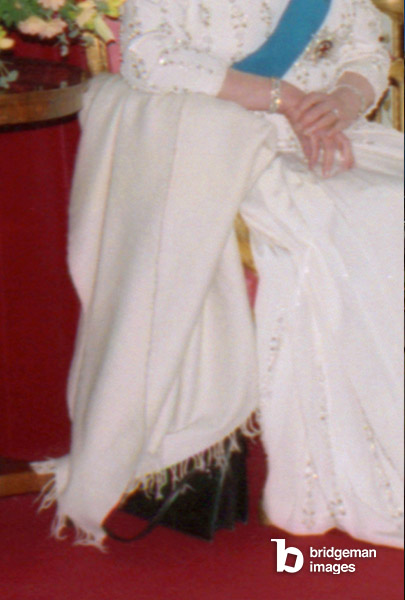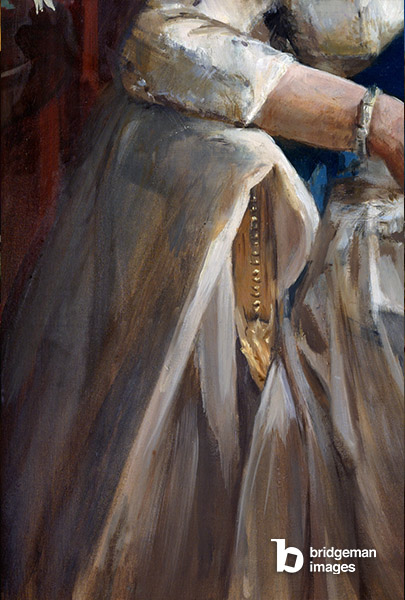Christian Furr on painting the Queen
In 1994 when Emma and I moved to a flat above an Indian restaurant ‘The Red Rose’ in Surbiton - I received a call from the Royal Overseas League’s Director-General, Robert Newell.
“Are you sitting down?” he asked me. “The Queen would like you to paint her portrait,” I remember taking the call. It was a shock.
The Royal Over-Seas League is a commonwealth organization and it used to have an annual open exhibition for young artists and I submitted ‘Acedia’. A painting of a young man in a red jacket holding a brush. The exhibition was attended by Princess Alexandria who I met and chatted to. The fact that this painting was exhibited led to a commission to paint the Chairman of the Over-Seas League and former director of Air India, Maneck Dalal.
The Queen had been given a shortlist of artists to choose from and had seen my portrait of Maneck Dalal in his garden and liked it. She had actually chosen me to paint her portrait.
%20_%20Private%20Collection%20_%20%C2%A9%20Christian%20Furr_%20All%20rights%20reserved%202022%20_%20Bridgeman%20Images%20.jpg)
It was 1995 the year that Pulp released Common People and the album Different Class and Britpop was exploding. I was twenty-eight.
I went to the palace beforehand to meet the Queen's dresser. I went through all the possible outfits with the Queen's dresser. I wanted the Queen to wear national colours, red, blue and white, and so I’d chosen the Order of Star and Garter dress, which I thought summed her up as both a person and an icon.
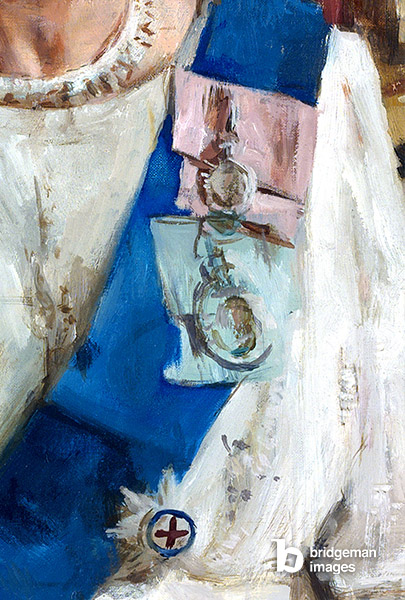
On the day of the first sitting, I drove to Buckingham Palace in my red VW Beetle with its boot full of paintbrushes. When I told the guards why I was there, they laughed.
I wanted to paint the Queen quite close up – so many other portraits, including Annigoni’s, had been fairly distant and formal.
%20_%20Private%20Collection%20_%20%C2%A9%20Christian%20Furr_%20All%20rights%20reserved%202022%20_%20Bridgeman%20Images%20.jpg)
The Queen chose to wear the diamond ‘Girls of Great Britain and Ireland’ Tiara, a gift to the future Queen Mary in 1893. In 1947, Queen Mary gave it to her granddaughter Elizabeth as a wedding present. It has become such a familiar image through its appearance on our banknotes and coins.
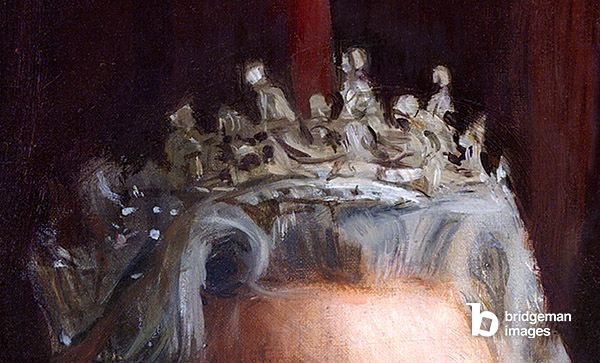
When the Queen entered the yellow drawing-room she was carrying a blanket and put it on the side of her chair. She actually asked me if I minded. I included it in the portrait because I felt it showed an element of vulnerability. It could have been overwhelming at the start of my career but she put me completely at ease and I think that comes out in the painting.
I had two sittings and the Queen was chatty, lively and perfectly charming. She had a good memory of remembering people she had met on walkabouts years before. She asked me what paintings I liked. At the time I was inspired by Gainsborough and Reynolds. “I think we’ve got a few of those,” she said – she had a sense of humour and I hope I’ve portrayed that. She was also animated and enjoyed the music outside during the changing of the guard.
I remember talking about other portraits of the Queen that had been done of her including Annigonis' 1954 portrait. In my naivete, I said that I thought she looked a bit haughty in it. And she explained the reason behind it. I was asking the Queen to look out of the window in my portrait. She said that Annigoni had asked the same but it was on the ground floor and all she had to look at was a wall outside so she ended up straining to see what was over it.
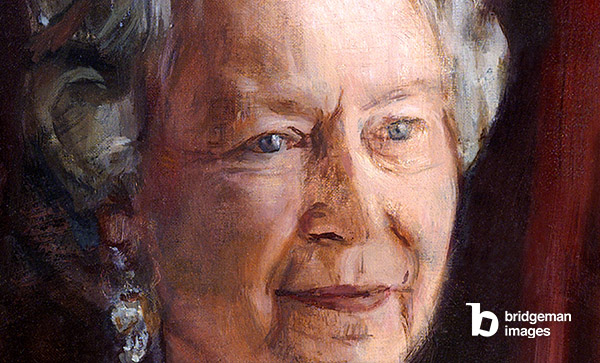
This story is a good example of one aspect of the Queen's temperament. The Queen is unrufflable. I am not sure if this is even a word but I think it is a fitting description. It is another way of saying stoic.
I think that after Princess Diana’s death the Queen came under fire from the media for apparently not meeting the expectations of the public who wanted some kind of show of emotion. But is this need a recent phenomenon? The Queen grew up in an age of 'stiff upper lip' and going back even earlier any show of passion was expressly and particularly forbidden to the sages of stoicism in the 3rd Century BC. I think I have caught something of the Queen's emotion in my portrait. She is slightly smiling enigmatically. At the end of the second sitting, the Queen asked me if I needed any more sittings and if I had got everything I needed. How kind.
%2C%20Furr%2C%20Christian%20(b_1966)%20_%20The%20Royal%20Overseas%20League%20Headquarters%2C%20Park%20Place%2C%20London%20_%20%C2%A9%20Christian%20Furr_%20All%20rights%20reserved%202022%20_%20Bridgeman%20Images%20.jpg)
I finished the painting in my Hackney Wick studio at the time. It took me two or three months and I remember feeling under pressure from myself to get the likeness right. I knew I was going to be judged. The Queen is one of the most recognisable people in the world and every brushstroke mattered. Sir Kenneth Scott, the Queen's private secretary, came to see it and was very pleased I got a nice letter from him afterwards, and I know the Duke of Edinburgh had a print of the painting because I presented him with it at the Arts Club on behalf of the Eccentric Club, a charity he was a patron of in 2010.
Regarding portraits, I believe in conjuring a likeness that 'physically and morally predicts the subject's entire future' A portrait should represent the subjects' past/present and future. I am interested in the concept of ‘block time eternalism’.
With every portrait, I aim to capture the soul's reality or 'essence' or 'aura' in paint crystallising it for centuries.
When you have your portrait painted it is your rendezvous with destiny.
The procedure of having your portrait painted itself causes you to focus on your life at the moment rather than hurrying past it.
-Christian Furr 2022
Discover our collection of paintings by Christian Furr.

